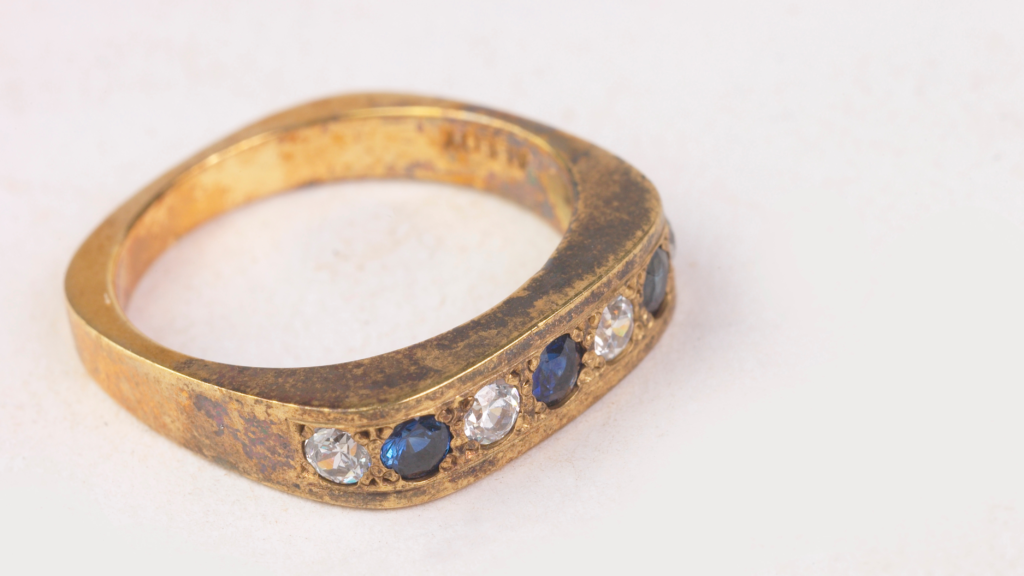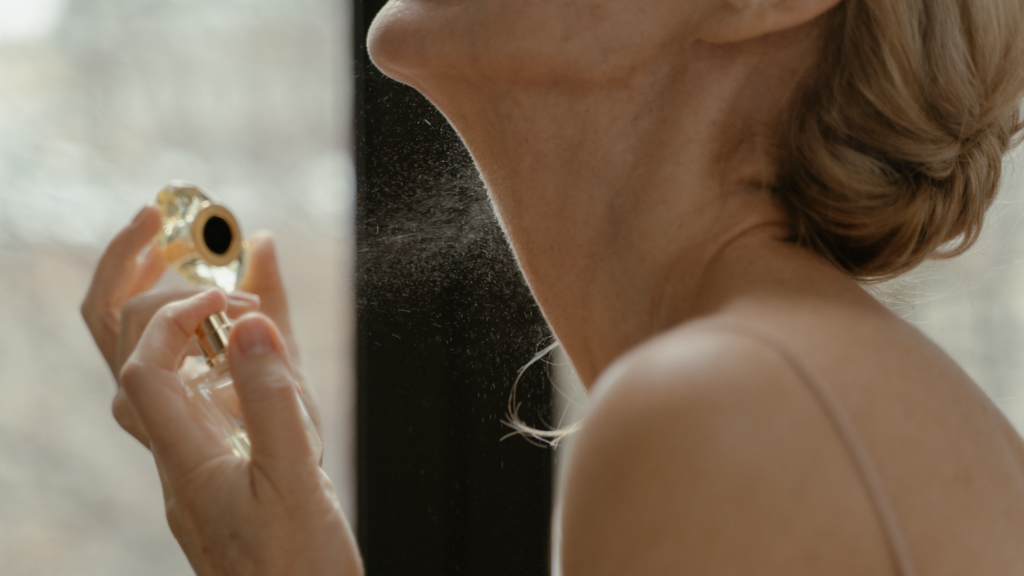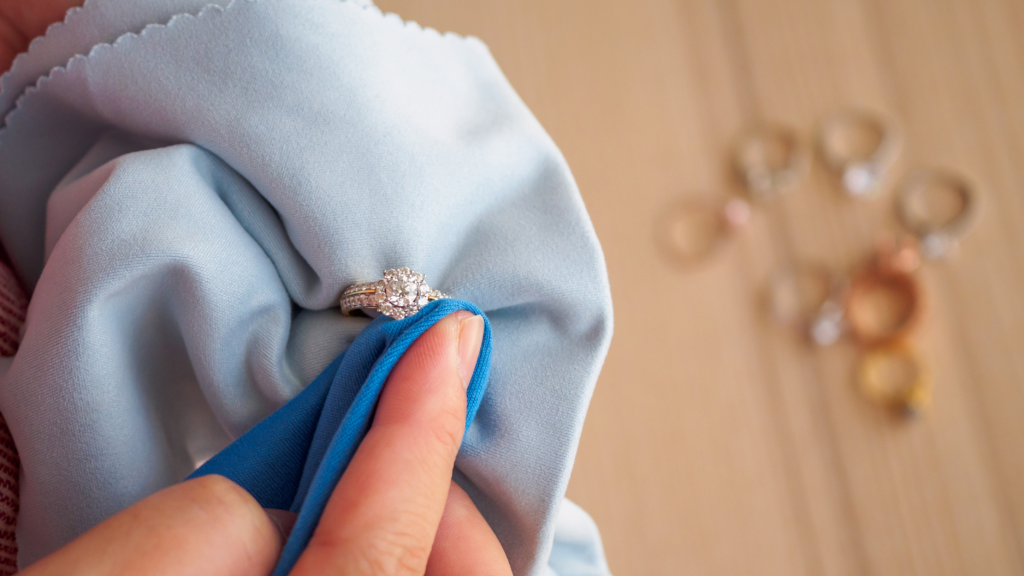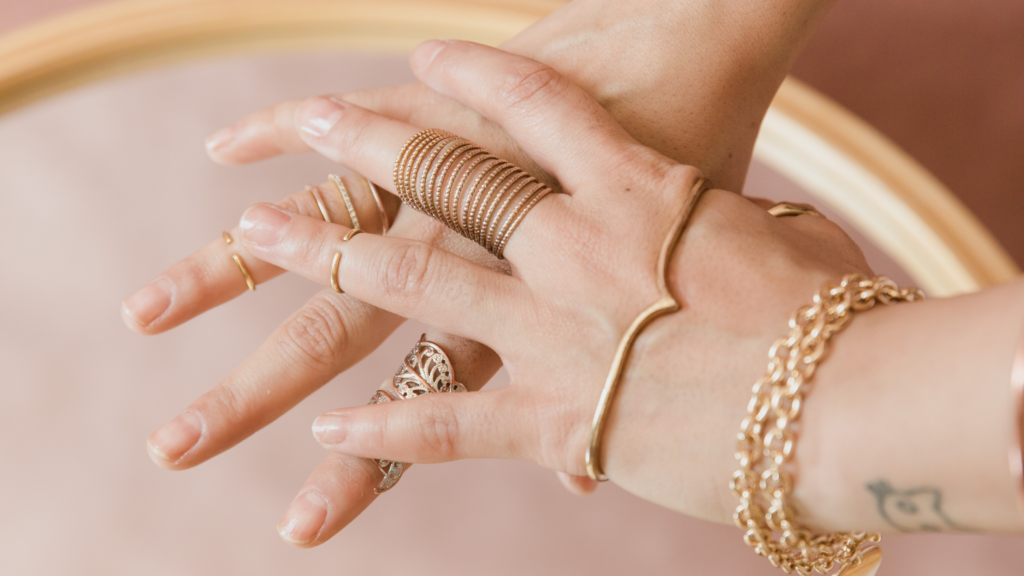Jewelry is a beautiful way to express personal style, celebrate milestones, or add sparkle to any outfit. However, many people have experienced the frustration of noticing their favorite pieces start to lose their shine or develop a dull, discolored layer. This phenomenon is known as tarnishing, and it can happen to various types of jewelry. But what causes tarnishing, and is there anything you can do to prevent it? In this blog, we’ll explore why jewelry tarnishes, the factors that contribute to it, and how to protect your precious pieces.
What is Tarnishing?

Tarnish is the discoloration that forms on jewelry when it reacts with certain substances in the environment. It typically manifests as a dull, gray, or brown coating that diminishes the shine and beauty of the piece. Tarnish doesn’t just happen to cheap jewelry; it can affect even the highest quality pieces, although the severity of tarnishing can depend on the material and care involved.
The Chemistry Behind Tarnishing

Tarnishing is a chemical reaction, primarily involving metals like silver, copper, and brass. It occurs when the metal reacts with sulfur or oxygen in the air, causing a layer of corrosion to form on the surface. This reaction is known as oxidation, and the metal combines with elements in the environment, such as oxygen or sulfur compounds, to form tarnish. For instance:
- Silver Tarnish: Silver tarnishes when it reacts with sulfur-containing substances, such as the air, foods, or products like lotions and perfumes. This results in the formation of silver sulfide, which appears as a dark, discolored layer on the surface.
- Copper Tarnish: Copper tarnishes more quickly and often develops a greenish patina (a process called verdigris) when exposed to moisture, air, and acids. This reaction occurs when copper combines with carbon dioxide or water in the environment.
- Brass Tarnish: Brass is a mixture of copper and zinc, and like copper, it can tarnish when exposed to air, moisture, and certain chemicals, leading to a dull, discolored surface.
However, Merriment Baubles jewelry is made from brass that is coated with a thick layer of gold, creating a durable, tarnish-resistant finish. This thick gold plating acts as a protective shield, preventing direct exposure to the air and elements that typically cause tarnishing. As a result, your jewelry stays bright and shiny, offering the elegance of gold without the maintenance typically associated with brass or other metals.
With our thick gold plating, your Merriment Baubles jewelry maintains its brilliance for years to come, with minimal risk of tarnishing, allowing you to enjoy your pieces with confidence and ease.
Factors That Contribute to Jewelry Tarnishing

Several environmental and lifestyle factors can accelerate the tarnishing process. Understanding these factors can help you take steps to protect your jewelry and keep it looking beautiful longer:
1. Exposure to Air and Moisture
Tarnishing happens more quickly when jewelry is exposed to air, particularly humid or moist environments. This is why jewelry stored in damp places, such as bathrooms, tends to tarnish faster. Likewise, exposure to rain or sweat while wearing jewelry can accelerate tarnishing, especially for pieces made of metals like silver or copper.
2. Contact with Chemicals
Chemicals found in everyday products like perfumes, lotions, hairsprays, and cleaning agents can cause jewelry to tarnish. These substances contain oils, acids, and salts that can react with metals, speeding up the oxidation process. For example, silver jewelry may tarnish more quickly when it comes into contact with certain household cleaning products or harsh chemicals.
3. Exposure to Sulfur
Sulfur is a major contributor to tarnishing, especially for silver jewelry. It is present in various substances like pollution, rubber bands, and certain foods (such as eggs and onions). When jewelry comes into contact with sulfur, the metal reacts and forms a tarnish layer.
4. Wearing Jewelry While Exercising
Physical activities like exercising, swimming, or even cooking can expose jewelry to sweat, oils, and chemicals in the air or water, which can lead to tarnishing. Chlorine, in particular, is highly corrosive to metals and can cause significant tarnishing and damage to jewelry.
5. Improper Storage
How you store your jewelry plays a significant role in how quickly it tarnishes. Jewelry left exposed to air in places where it isn’t properly protected will tarnish faster. Additionally, pieces that come into contact with other jewelry can cause abrasion or scratches that speed up tarnishing.
6. Body Chemistry
Everyone’s body chemistry is unique, and some individuals may experience more rapid tarnishing due to their natural oils, sweat, and pH levels. People who have more acidic skin, for example, may notice that their jewelry tarnishes more quickly.
How to Prevent Jewelry from Tarnishing

While tarnishing is a natural process, there are several ways you can reduce the risk and keep your jewelry shining bright:
1. Proper Storage
Store your jewelry in a dry, cool place, away from direct exposure to air. Use airtight jewelry boxes or pouches lined with anti-tarnish cloth to minimize exposure to moisture and air. For silver jewelry, you can also use tarnish-resistant strips that help absorb sulfur and moisture in the air.
2. Avoid Contact with Chemicals
Remove your jewelry before applying perfumes, lotions, hairspray, or cleaning products. It’s also wise to take off your jewelry before swimming, as chlorine can be especially damaging. Avoid wearing jewelry while cleaning or using harsh chemicals, and keep your jewelry away from beauty products that contain alcohol.
3. Regular Cleaning
Regular cleaning is essential for maintaining the shine of your jewelry and preventing tarnish buildup. For silver, a soft cloth can remove tarnish before it becomes too noticeable. For more stubborn tarnish, use a specialized silver cleaner. Be sure to clean your jewelry gently to avoid damaging the surface. Gold and platinum jewelry also benefit from regular gentle cleaning.
4. Wear Your Jewelry
Interestingly, wearing your jewelry can actually help prevent tarnishing. The natural oils in your skin can help keep the metal surface clean and polished. However, be mindful of taking it off before sleeping, exercising, or exposing it to harsh environments.
5. Use Anti-Tarnish Products
There are a variety of anti-tarnish products available, including sprays, cloths, and bags, designed to prevent tarnish from forming on your jewelry. Anti-tarnish cloths are particularly useful for silver jewelry, as they are impregnated with chemicals that prevent tarnish and polish your pieces simultaneously.
6. Clean Jewelry Gently
When cleaning tarnished jewelry, use gentle methods. For silver, a non-abrasive polishing cloth or a mixture of baking soda and water can help remove tarnish without damaging the metal. Avoid using toothpaste or abrasive materials, as these can scratch the surface of your jewelry and cause further damage.
How to Restore Tarnished Jewelry
Even with the best care, tarnishing is inevitable over time. Fortunately, restoring tarnished jewelry is often possible with the right techniques and tools. Here are some effective methods you can try to bring your pieces back to their former glory:
1. Polishing Cloths
One of the easiest ways to restore tarnished jewelry is by using a polishing cloth. These cloths are infused with a cleaning solution specifically designed for tarnish removal. Simply rub the tarnished areas with the cloth in a gentle, circular motion. This method works well for light tarnish and helps maintain the shine without causing damage to the metal.
2. Baking Soda and Water Solution
For more stubborn tarnish, a mixture of baking soda and water can be very effective. Create a paste by mixing equal parts baking soda and water. Apply the paste to the tarnished areas of your jewelry using a soft cloth or toothbrush. Gently scrub the piece, making sure not to scrub too harshly, especially for delicate pieces. Rinse thoroughly with lukewarm water and dry with a soft towel.
3. Silver Polish
If you’re dealing with silver tarnish, silver polish is a tried-and-true method for restoration. Silver polish creams and liquids are specifically formulated to remove tarnish and restore shine. Apply a small amount of polish to a soft cloth or sponge and gently rub it over the tarnished areas. After polishing, rinse the jewelry with warm water and buff it dry with a soft cloth.
4. Commercial Tarnish Removers
There are several commercial tarnish removers available on the market, including dips and sprays. Tarnish dips are effective at removing tarnish quickly but should be used with caution, as they can sometimes be too harsh for sensitive jewelry. Always follow the instructions on the product label, and if in doubt, test it on a small, inconspicuous area of the jewelry before applying it to the entire piece.
5. Professional Cleaning
If your jewelry has been tarnished for a long period of time, or if you’re hesitant to try home remedies, it’s always a good idea to take your jewelry to a professional jeweler. Jewelers have specialized tools and expertise to safely restore your jewelry to its original condition. They may also offer services like rhodium plating for silver or gold jewelry to further protect it from tarnishing in the future.
When to Replate Jewelry
For jewelry that has seen significant tarnishing or wear, replating may be a necessary option. Replating involves adding a fresh layer of metal (often rhodium or gold) to your jewelry to restore its appearance and provide added protection. Replating is particularly useful for pieces like gold-plated or silver-plated jewelry that may have worn down over time.
Jewelry restoration, including replating, can give your tarnished pieces a fresh new look and extend their lifespan.
Why Jewelry Care Matters

Jewelry isn’t just a collection of metal and gemstones; it’s often a reflection of personal style, sentiment, or cherished memories. Whether it’s an engagement ring, family heirloom, or a recent purchase, your jewelry deserves to be cared for and preserved. Taking the time to properly maintain your pieces not only keeps them looking their best, but it also ensures that they last for years, even generations.
Merriment Baubles offers jewelry that is crafted with quality and style in mind. We understand that jewelry is not just an accessory—it’s a piece of art, an investment, and sometimes, a family treasure. By following the care tips outlined here, you can enjoy your jewelry with peace of mind, knowing that it will continue to shine and bring joy for years to come.
Choosing the Right Jewelry for Your Lifestyle
Understanding your lifestyle and how your jewelry fits into it is key to making wise purchasing decisions that will ensure longevity. If you lead an active lifestyle or work in environments where your jewelry could be exposed to harsh chemicals, physical activities, or high humidity, consider opting for more durable metals and designs. For example, titanium or stainless steel is highly resistant to tarnishing, making them ideal for daily wear.
On the other hand, if your jewelry is more for special occasions and you wear it infrequently, you may opt for more delicate pieces made of sterling silver, gold, or platinum, knowing that you’ll have time to properly care for them and protect them from wear and tear.
At Merriment Baubles, we offer a variety of jewelry pieces that cater to all lifestyles. Whether you’re looking for something durable and low-maintenance for everyday wear or a luxurious, intricate design for special occasions, we’ve got the perfect piece for you. And with proper care, even your more delicate pieces will maintain their brilliance and shine.
Investing in Jewelry Care
Investing in jewelry care, from professional cleaning to using anti-tarnish products, is a wise decision that pays off in the long run. While it may seem like an extra effort, the value of preserving your jewelry’s appearance and integrity is priceless. Jewelry is an investment—not only in style but in the memories and sentiments attached to it. Whether it’s a gift, an heirloom, or a personal indulgence, your jewelry is worth preserving for years to come.
By following these care tips and understanding how tarnishing works, you can enjoy your jewelry for many years without worrying about damage or discoloration. At Merriment Baubles, we’re passionate about helping our customers keep their jewelry in perfect condition, so you can always feel confident and radiant in your pieces.
Final Thoughts: Keeping Your Jewelry Beautiful
Tarnishing is a natural process that happens over time, but with the right care and precautions, you can extend the life and beauty of your jewelry. By understanding what causes tarnishing and how to prevent it, you can keep your favorite pieces sparkling and looking as good as new. Whether it’s silver, copper, brass, or any other metal, a little care goes a long way in preserving the shine and elegance of your jewelry.At Merriment Baubles, we offer high-quality jewelry with timeless appeal. Explore our collection to find pieces that will add sparkle to any occasion—and don’t forget to give them the proper care they deserve to keep them looking their best for years to come!

